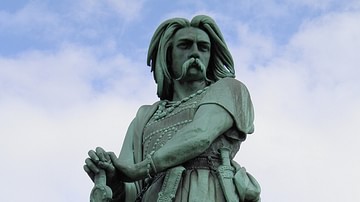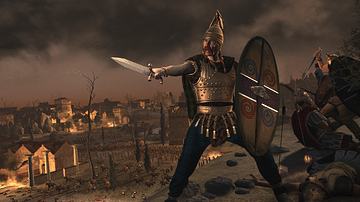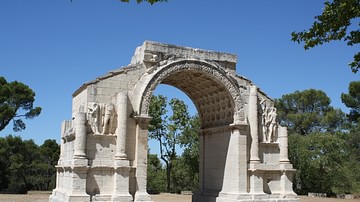
Gaul (Latin Gallia, French Gaule) is the name given by the Romans to the territories where the Celtic Gauls (Latin Galli, French Gaulois) lived, including present France, Belgium, Luxemburg and parts of the Netherlands, Switzerland, Germany on the west bank of the Rhine, and the Po Valley, in present Italy. The ancient limits of Gaul were the Rhine River and the Alps on the east, the Mare Nostrum (Mediterranean Sea), the Po Valley and the Pyrenees on the south, and the Atlantic Ocean on the west and North. Before the Roman conquest by Julius Caesar (58-51 BCE), the name “Gaul” corresponded to a cultural and military area founded on a common religion and federations of peoples who thought they had a common origin. This common origin probably dates back to the 8th century BCE, when migrant groups of the Bronze Age Urnfield culture spread slowly across the area of the future territory of Gaul. About 390 BCE, the Gauls invaded and sacked Rome. In 222 BCE, Cisalpine Gaul (the region between the Alps and the Po Valley) was conquered by the Romans. The best description we know about the pre-Roman Gaul is in the first chapter of the Commentarii de Bello Gallico, of Caius Julius Caesar. It is clearly a Roman point of view of the Gallic realities:
All Gaul is divided into three parts, one of which the Belgae inhabit, the Aquitani another, those who in their own language are called Celts, in ours Gauls, the third. All these differ from each other in language, customs and laws. The river Garonne separates the Gauls from the Aquitani; the Marne and the Seine separate them from the Belgae. Of all these, the Belgae are the bravest, because they are farthest from the civilisation and refinement of [our] Province, and merchants least frequently resort to them and import those things which tend to effeminate the mind; and they are the nearest to the Germans, who dwell beyond the Rhine, with whom they are continually waging war; for which reason the Helvetii also surpass the rest of the Gauls in valour, as they contend with the Germans in almost daily battles, when they either repel them from their own territories, or themselves wage war on their frontiers. One part of these, which it has been said that the Gauls occupy, takes its beginning at the river Rhone: it is bounded by the river Garonne, the ocean, and the territories of the Belgae: it borders, too, on the side of the Sequani and the Helvetii, upon the river Rhine, and stretches towards the north. The Belgae rise from the extreme frontier of Gaul, extend to the lower part of the river Rhine; and look towards the north and the rising sun. Aquitania extends from the river Garonne to the Pyrenaean mountains and to that part of the ocean which is near Spain: it looks between the setting of the sun and the north star.
After Julius Caesar had conquered Gaul, the territorial organization of Gaul as part of the Roman Empire was concluded by Emperor Augustus from 27 to 12 BC: Respecting the ancient organization described by Julius Caesar, Augustus created three Roman Provinces: Gallia Belgica, Gallia Lugdunensis and Aquitania. In the south, the old Roman Provincia, to which Massilia was added, was renamed Gallia Narbonensis. The territories bordering the Rhine River were combined into two military areas, which under Domitian became the provinces of Upper and Lower Germania. For about 200 years the Roman peace (Pax Romana) was maintained, with the exception of some local revolts and civil troubles. The Germanic incursions of the 3rd century AD marked the end of this epoch.





